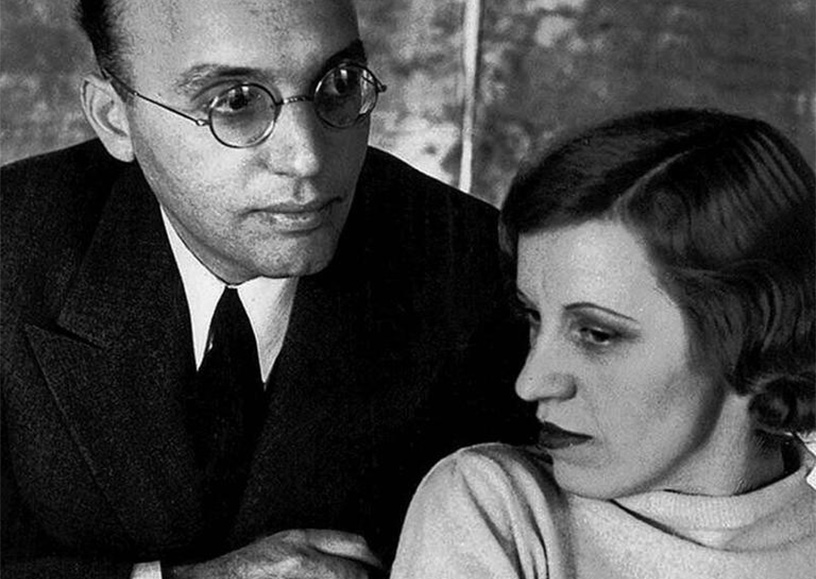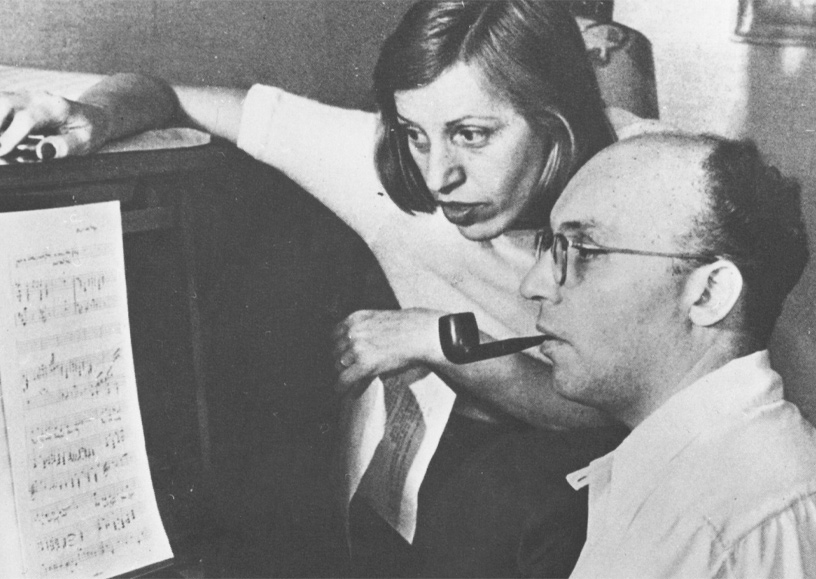
Kurt Weill: from opera to Broadway
Trained in the classical tradition but writing for audiences from all ranks of society, Kurt Weill occupies a unique position in music history, with an oeuvre that can be heard in concert halls, opera houses, on Broadway and even in pop venues.
Text: Hein van Eekert
The year is 1924. Life is tough for young artists, but the Viennese actress Karoline Blamauer gets a lucky break: she is able to lodge with Germany’s leading avant-garde dramatist Georg Kaiser and his family. She is invited as a guest but she wants to do something in return, so she looks after the children and performs some tasks around the house. One day, Kaiser asks her to pick up a man from the station, a composer he will be collaborating with on a new play. Karoline can take the long way to the station, through the woods, or she can take a boat across the lake. She chooses the lake. As she travels, she wonders how she is going to be able to recognise the composer, but it turns out there is only one man waiting at the station. She approaches him. “I asked, ‘Are you Mr Weill?’ And he said ‘Yes’ in that really soft voice of his, that incredibly gentle voice.” They take the boat back across the lake. On the way, he confesses they have actually already met because she auditioned for his ballet Zaubernacht.
That man was Kurt Weill, a classically trained composer who had been taught by masters in both the late Romantic tradition and a more contemporary style. He had composed chamber music and symphonies. His main concern was not so much to discover a new sound as to create music that had relevance for new audiences. He was to find those audiences in his collaborations with writers such as Georg Kaiser and Bertolt Brecht, and later on Broadway. His work would be performed by singers from many different disciplines, from Wagner diva Martha Mödl to pop star Robbie Williams.

Lotte Lenya
To a large extent, it was the woman opposite him in the boat who was responsible for that popularity. She was the woman for whom he composed the roles of Jenny in Die Dreigroschenoper and Jenny in Aufstieg und Fall der Stadt Mahagonny. Karoline Blamauer was a dancer and actress who performed under the name Lotte Lenya. Weill composed the ‘Salomonsong’ in Die Dreigroschenoper and the ‘Alabama Song’ in Mahagonny to suit her voice, at that time a soprano. But this was all still to come. During his stay with the Kaisers, Kurt Weill and Lotte Lenya would go out on the lake on a number of occasions. On the day she accidently dropped his glasses in the water, he asked for her hand in marriage.
Kurt Weill’s first composition that has survived dates from 1913. It is ‘Mi Addir’, a Jewish marriage song. Weill was born in 1900 and grew up in the Jewish quarter of Dessau, living next door to the synagogue where his father Albert was the cantor. The young Kurt turned out to be musically talented and he went to Berlin to study, where he was taught by Engelbert Humperdinck, the composer of the opera Königskinder. For a young man from Dessau, Berlin was a city of unimaginable possibilities with a very modern take on morality. It had about eighty theatres, even more cinemas and three opera houses. Weill soaked up all these forms of culture. However, the family back in Dessau had fallen on hard times so Weill had to return home, taking on work as a répétiteur and conductor. He composed a string quartet, a symphonic poem, an orchestral suite and a song cycle, all in a largely late Romantic, expressionist idiom.
Busoni pupil
When he returned to Berlin at the end of 1920, Kurt Weill became one of five pupils taught by Ferruccio Busoni. Here he learned a more neo-Classical style. It was during Weill’s time with Busoni that he wrote his first symphony — the score of which was rediscovered only years later. Busoni’s influence is seen in Weill’s later work, composed for the theatre, in the somewhat aloof sound that serves as an ironic commentary on the characters’ emotions. Meanwhile, Weill joined the left-wing Novembergruppe in his quest for new audiences. This was where, in 1924, he met the writer Georg Kaiser, the man with whom he would work on various one-act plays, with his music revealing jazz influences for the first time.
‘His work would be performed by singers from many different disciplines, from Wagner diva Martha Mödl to pop star Robbie Williams’
1924 was also the year of his boat trip with Lotte Lenya. They were married twice: from 1926 to 1933 and from 1937 to Weill’s death in 1950. Lotte Lenya also had a role in Kurt Weill’s first collaborative project with Bertolt Brecht in 1927: five poems about the pleasures of life, named after a place far away in an imaginary America. In the Mahagonny Songspiel, Brecht criticises American society as bourgeois and corrupt. At the same time, both the text and the score — with its references to the dances and show music of the day — reflect the fascination among the German people for all things American.

Composer for the theatre
From then on, Weill became primarily a composer for the theatre. He was interested in the fit between the spoken text and the music. Spectators are made aware of that in Die Dreigroschenoper, a collaborative venture with Bertolt Brecht: in this ‘beggars’ opera’, some of the characters announce beforehand that they are about to sing a song, or they address the audience directly. The music has traces of the eighteenth-century English Beggar’s Opera on which Die Dreigroschenoper is based, but it also includes popular modern dances such as the tango.
Weill continued to play with this combination of the classical and the contemporary. And America, the decadent dreamland, continued to fascinate him. In 1930, Brecht and Weill turned Mahagonny into a full-length piece. The opening bars of Aufstieg und Fall der Stadt Mahagonny suggest a neo-Classical work, until the music switches to American swing. Lotte Lenya sang the female lead. She did again in the ballet chanté entitled Die sieben Todsünden. Lenya and a dancer play two sisters, or possibly the same woman, who travels from one city to the next in America to earn money for her family so that they can build a new home in Louisiana.
Fleeing to America
The fantasy America in the theatrical works was exchanged for the real thing when Weill and Lenya — together, separated and back together again — were forced to flee in the face of Hitler’s growing power in Europe. As Lenya said later, the America they moved to was very different from the version in the work of Weill and Brecht: “Only the moon is the same.” In New York, Lotte Lenya struggled to find acting work at first with her pronounced Austrian accent. Weill fared somewhat better, even if he ended up on Broadway rather than with the Metropolitan Opera as he had hoped. He built up an impressive oeuvre of music theatre. Over time, the distinctive style of his German years faded as he sought out new impulses. Ambitious projects followed. They included Knickerbocker Holiday, a musical about the Dutch in Nieuw-Amsterdam (with the famous ‘September Song’), Lady in the Dark, a musical structured like a play with three large blocks of music, and Street Scene, an opera about the diverse community living in a tenement in New York. This series of works came to an abrupt and premature end when Weill died in 1950.
Some years later, Lotte Lenya found a new career when she started to promote Weill’s work, with landmark interpretations in a voice that was now what she herself called “an octave below laryngitis”. Artists from a wide range of musical disciplines — classical, jazz, pop — have followed in her footsteps. While some of his works have yet to receive much attention, Weill has become a household name. Perhaps he would have wanted it that way. Lotte Lenya once wrote to a friend: “He would have got more pleasure from hearing a taxi driver whistle his melodies than from winning the Pulitzer Prize.”